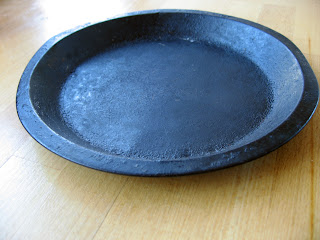- 375g strong white flour
- 250g starter
- 7.5g salt
- 1 and half bananas
- 150g muesli
- 225g water
 Despite an extra stretching and folding the dough never really got stretchy. It was also less wet than a normal plain sourdough dough. I divided it into two small balls and managed to shape them using flour and put them into bowls with flour at the bottom.
Despite an extra stretching and folding the dough never really got stretchy. It was also less wet than a normal plain sourdough dough. I divided it into two small balls and managed to shape them using flour and put them into bowls with flour at the bottom.Paul Hollywood's original recipe states that the loaves should be proved for around 13 hours. I baked one loaf after 6 hours of proving. It hadn't grown much in the bowl. I started off with a medium oven temperature of 180 degrees C fan, but after 40 minutes it had no colour on it so I increased the temperature and the time. The finished loaf was quite small and heavy.
I left the other loaf to prove overnight (meaning it had 15 hours of proving). I was surprised to see that it had grown to quite a good size in the bowl. However, it did not rise any more during baking.
Comparing slices from the loaves, the one at the top is from the 6 hour proved loaf, the one at the bottom proved for 15 hours. Whilst both are heavy, and a bit rubbery, the longer proved loaf has a more "grown up" texture.
I think this loaf might be better as an instant yeast recipe, rather than a sourdough one. My sourdoughs all seem to be quite moist, I often think I should have baked them more.
 It might be an idea to actually follow his recipe! Neither of the two versions I have made, have been as good as the one made to his recipe that I bought in Waitrose, which is a surprise as bread bought from a supermarket wrapped in plastic is usually not very good.
It might be an idea to actually follow his recipe! Neither of the two versions I have made, have been as good as the one made to his recipe that I bought in Waitrose, which is a surprise as bread bought from a supermarket wrapped in plastic is usually not very good.







